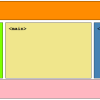A relatively brief overview of the privacy policies and practices of four companies you probably interact with on a regular basis. It’s good food for thought.
The Best Of The Internets
The price of free: how Apple, Facebook, Microsoft and Google sell you to advertisers
Why Autoplay is an accessibility issue
I’ve written about why you should not autoplay videos, but here’s another account of why it’s bad and what you can do about it.
Easy content organisation with HTML5

An excellent primer/reminder about HTML5’s organizational elements.
Building an Enterprise CSS Framework

My good friend Stef Sullivan Rewis shared a bit about the process and decision-making that went into the CSS Framework underpinning Salesforce’s Lightning Design System. It’s a worthwhile read and will definitely be helpful if you’re undertaking a similar project.
Accessibility: Towards a more inclusive web with Microsoft Edge and Windows 10

My colleague Cynthia Shelly posted a bit about accessibility in Edge in terms of where we are and where we’re going. She included a bit about the roadmap as well.
Apple Blows Up The Concept Of A Privacy Policy

While its title is a little hyperbolic, the article highlights some of the work Apple is doing to make their Privacy Policy more accessible. You know, so non-lawyers can actually understand what Apple does with their data and why.
In the Future, How Will We Talk to Our Technology?

Depending on how you read the title, your expectations for this article may not align with the subject: the technical means by which we talk to our devices. It’s not about the APIs or voice recognition, but rather how our desires are transferred from our mind to our device’s “ears”. Voice is obviously one way—and David spends a lot of time discussing microphone improvements—but it could also be silently using subvocalization.
If—like me—this stuff fascinates you, you should definitely give it a read.
Before you learn to code, ask yourself why

This is a really thoughtful piece weighing the pros and cons of code schools against teaching yourself with a big focus on why you might want to learn to code. I highly recommend this piece for anyone thinking about getting into coding. Share away!
U.S. Web Design Standards

I’m so excited to see this resource making it out into the public. Congrats to the U.S. Digital Service and 18F folks for their awesome work and for their focus on accessibility!
CSS Round Display Level 1

An interesting proposal from LG regarding design tools for addressing non-rectangular screens.